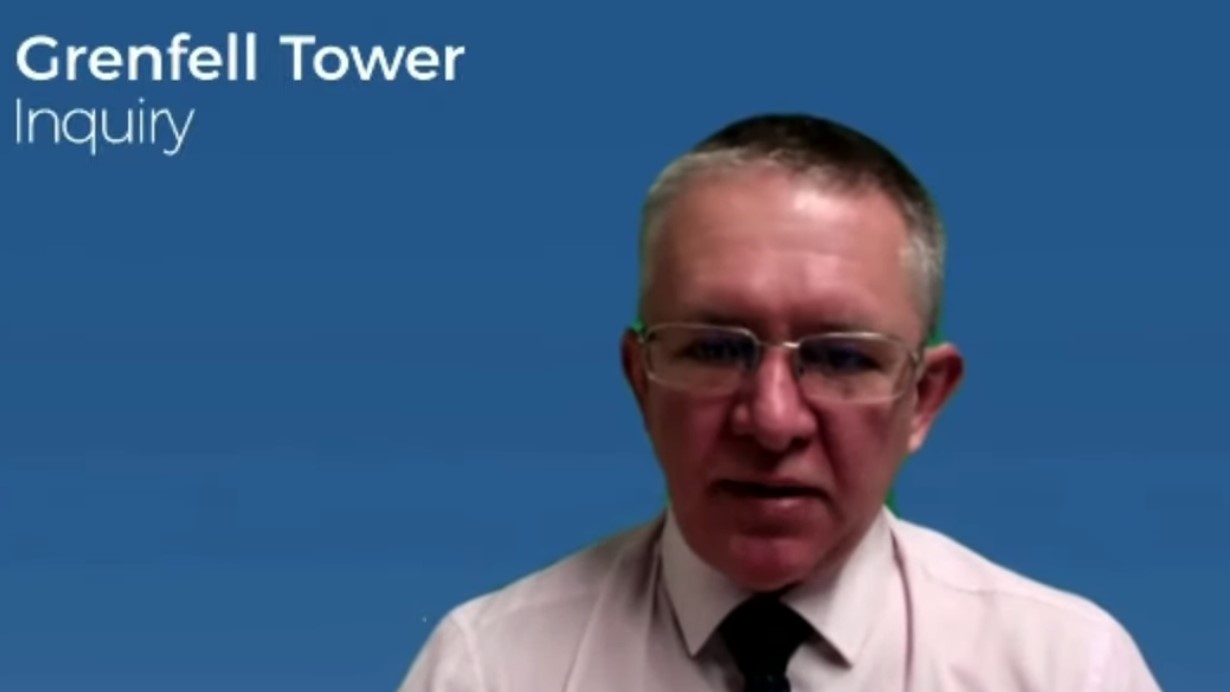
Vertical cavity barriers installed behind the cladding of Grenfell Tower during its refurbishment were so poorly installed that they were “totally ineffective” and non-compliant, the Grenfell Tower Inquiry has heard.
Giving evidence to the Inquiry for a second day, Christopher Mort, a technical officer for fire at cavity barrier firm Siderise was asked about an inspection he had made of undamaged cladding and fire-damaged cladding a year after the June 2017 disaster that took the lives of 72 people.
Asked to characterise the installation of the barriers, which was undertaken by subcontractor Osborne Berry for cladding specialist Harley Curtain Wall, Mort said it was “probably of the poorest standard I have ever seen”.
Mort confirmed that in some locations he was unable to identify support brackets or holes for support brackets, which suggested cavity barriers either had not been installed at all or had been installed incorrectly without support brackets and “perhaps with some silicone”.
Asked what the effect would be of installing the cavity barriers with silicone rather than support brackets, Mort said: “They’re not installed in accordance to our guidance and in accordance with how they’re tested. Therefore they’re non-compliant.”
Mort observed that horizontal cavity barriers were not installed in accordance with guidance and that in particular gaps were too wide and therefore would not have been closed by an intumescent strip that is meant to expand and close the gap during a fire.
He said: “We talked about the very large differences in installation guidance. Instead of it being a 25mm gap, you’ve got a 140mm gap. That’s way beyond any form of sensible parameters.”
As far as the vertical cavity barriers were concerned, Mort noticed that in some places, the horizontal support brackets were used, resulting in the end of the cavity barrier being pierced. Mort said: “I’m almost certain the piercing actually indicated that there was a clear void from the end of the vertical barrier to the cladding. So the vertical barriers were totally ineffective. They weren’t installed in accordance with our guidance and weren’t installed as they – how they had been tested.”
Mort said that had he seen barriers installed in such a way during construction, they would have to have been removed and replaced with new material.
He agreed with counsel to the Inquiry Kate Grange QC that they were “fundamental errors in the installation that no reasonable installer should have been making”.
Cavity barriers EXAP issued nine days after disaster
In an earlier hearing on 8 March, Mort was asked why Siderise released an extended application assessment (EXAP) that extended the application of its cavity barrier to gaps of up to 425mm. The cavity barriers were approved for use with wider gaps on 23 June 2017, just days after the Grenfell Tower fire on 14 June 2017. The barriers had been sold for use on Grenfell Tower for void sizes of between 264mm and 325mm, and 326mm and 425mm, despite only being tested to a maximum of 300mm.
Mort responded that the EXAP was “just requested from the business”, but he “couldn’t say” if the move was in response to the Grenfell Tower disaster.
The Inquiry continues.
Comments
Comments are closed.











It seems to me that responsibility for site installation should lye directly with the element subcontractor at source and that they themselves should certify that the work is in compliance with all requirements and manufacturers method statements and specifications .Work sub elements should not be allowed to progress and be in default and uninsured until these sub element specific certificates are checked and also signed off by Main Contractor , Building Control and Clients Agent/ Representative and Insurers. If Certificates were not produced in this way valuation payments would be stopped and Insurance cover would not be invalid. This should be strictly applicable at each stage. Only in this way ( from the bottom up) were jobs are stalled and PAYMENTS are STOPPED would Industry sit up and be forced to get their house in order and not hide behind the present recipe of unclear responsibilities under Design and Build.
Peter Anderson CIOB